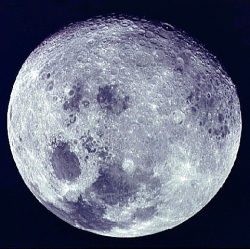
A small team at NASA’s Ames Research Center has set out to “boldly grow where no man has grown before” – and they’re doing it with the help of thousands of children, a robot, and a few specially customized GoPro cameras.
In 2015, NASA will attempt to make history by growing plants on the Moon. If they are successful, it will be the first time humans have ever brought life to another planetary body. Along the way, they will make groundbreaking contributions to our understanding of biology, agriculture, and life on other worlds. And though they may fail, the way they are going about their mission presents a fascinating case study of an innovative model for public-private collaboration that may very well change space entrepreneurship.
The Lunar Plant Growth Habitat team, a group of NASA scientists, contractors, students and volunteers, is finally bringing to life an idea that has been discussed and debated for decades. They will try to grow arabidopsis, basil, sunflowers, and turnips in coffee-can-sized aluminum cylinders that will serve as plant habitats. But these are no ordinary containers – they’re packed to the brim with cameras, sensors, and electronics that will allow the team to receive image broadcasts of the plants as they grow. These habitats will have to be able to successfully regulate their own temperature, water intake, and power supply in order to brave the harsh lunar climate.
However, it won’t just be NASA scientists who are watching the results closely – the success of this experiment will require the assistance of schools and citizen scientists.
In a brilliant mix of creativity and frugality, NASA will send schools their own set of habitats so they can grow the same plants that are being sent to the Moon. The reasons for this are two fold. First, every experiment needs a control, and instead of spending the money to duplicate the experiment multiple times, they can crowdsource it. By collecting the data from thousands of experiments, they can gain valuable insights in an entirely new way. Second, it allows children to be part of the moment – to not just watch from afar, but to gain experience and knowledge by actively participating.
